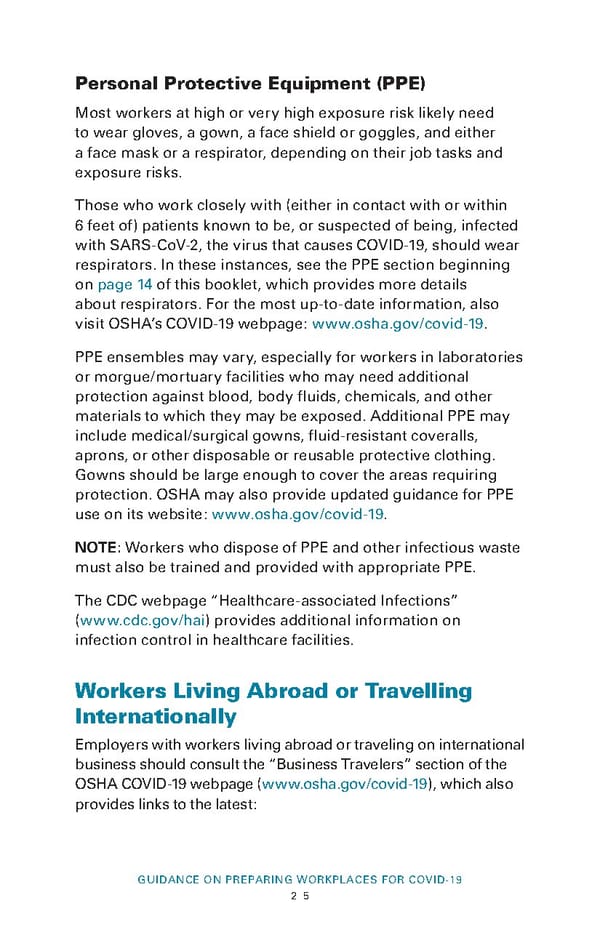Personal Protective Equipment (PPE) Most workers at high or very high exposure risk likely need to wear gloves, a gown, a face shield or goggles, and either a face mask or a respirator, depending on their job tasks and exposure risks. Those who work closely with (either in contact with or within 6 feet of) patients known to be, or suspected of being, infected with SARS-CoV-2, the virus that causes COVID-19, should wear respirators. In these instances, see the PPE section beginning on page 14 of this booklet, which provides more details about respirators. For the most up-to-date information, also visit OSHA’s COVID-19 webpage: www.osha.gov/covid-19. PPE ensembles may vary, especially for workers in laboratories or morgue/mortuary facilities who may need additional protection against blood, body fluids, chemicals, and other materials to which they may be exposed. Additional PPE may include medical/surgical gowns, fluid-resistant coveralls, aprons, or other disposable or reusable protective clothing. Gowns should be large enough to cover the areas requiring protection. OSHA may also provide updated guidance for PPE use on its website: www.osha.gov/covid-19. NOTE: Workers who dispose of PPE and other infectious waste must also be trained and provided with appropriate PPE. The CDC webpage “Healthcare-associated Infections” (www. cdc.gov/hai) provides additional information on infection control in healthcare facilities. Workers Living Abroad or Travelling Internationally Employers with workers living abroad or traveling on international business should consult the “Business Travelers” section of the OSHA COVID-19 webpage (www.osha.gov/covid-19), which also provides links to the latest: GUIDANCE ON PREPARING WORKPLACES FOR COVID-19 25
 Guidance on Preparing Workplaces for COVID-19
Page 26 Page 28
Guidance on Preparing Workplaces for COVID-19
Page 26 Page 28